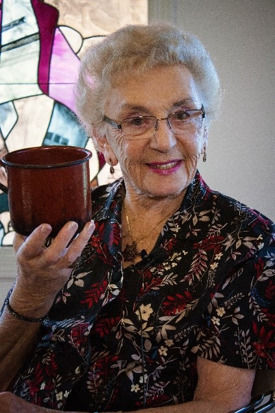Holocaust survivor talks about second chance at life

Celina Karp Biniaz
March 31, 2019
An 88-year-old holocaust survivor, saved by Oskar Schindler, spoke at the Memorial Union Sunday night about her “Second Chance at Life.”
Celina Karp Biniaz is one of the last living survivors of Schindler’s List, the list of 1,098 Jewish men, women and children who were saved from the Nazis and the Holocaust largely due to the humanity of Oskar Schindler. Biniaz’s family worked in Schindler’s factory until they were liberated in May 1945. Two years later they immigrated to Des Moines, where she graduated from North High School and subsequently attended Grinnell College.
The lecture was sponsored by Ames Jewish Congregation, Chabad of Ames, Hillel, Iowa Jewish Historical Society and the Committee on Lectures.
In a fully packed Great Hall of the Memorial Union, Biniaz sat on the edge of the stage to shake hands and greet attendees as they entered the room before moving up on stage to begin her talk.
“When I do these talks I like to pay tribute at the start to those who died in the Holocaust,” Biniaz said.
Biniaz said that her family was originally in a sewing factory of Julius Madritsch, which made uniforms for the German army. Schindler and Madritch were good friends, and when Schindler decided to save his workers Madricth put some of his workers on the list and Biniaz’s family luckily made it on.
“I don’t know whether it was chance, luck or fate that I made it on that list,” Biniaz said.
Schindler decided to move the factory to Czechoslovakia to save his workers, and he was able to save 1,100 which consisted of 800 men and 300 women.
The men were taken first and then the women, but they ended up in Auschwitz by mistake for five weeks. Fortunately for Biniaz, Schindler showed up to save the 300 women just in time.
Biniaz, her family and the rest of the workers were rescued by the Russian army on May 9, 1945. When preparing the workers to leave, Schindler apologized that he couldn’t save more than 1,100 people because he didn’t have enough money to buy the freedom of any more.
The workers created a gold ring out of the gold in their teeth and gave it to Schindler as thanks for saving them and also moved Schindler to the American zone because the Russians would have killed him for being a Nazi.
Each family got two bolts of cloth and five pairs of scissors when they were freed so they could barter there way back home or to a better life. Biniaz said that her family bartered away everything except one pair of scissors which she still has.
“I have kept this pair of scissors for 70 years,” Biniaz said.
When Biniaz’s family made it to Krakow, Poland, they asked the Red Cross to notify their escaped family that they were alive but barely anyone else in the family survived besides an uncle in the United States.
At 13, Biniaz had not been in school for a long time and had to study all summer to be able to prepare for the entrance exams into the local school, which she did pass.
“I could read but could not write because I had not held a pencil in my hand for all those years,” Biniaz said.
However, in September of 1945 Biniaz’s family decided to move away from Poland due to a pogrom in Eastern Poland.
“Pogrom is a Russian word meaning ‘to wreak havoc, to demolish violently,’” according to the Holocaust Encyclopedia. “Historically, the term refers to violent attacks by local non-Jewish populations on Jews in the Russian Empire and in other countries.”
The family paid off a Russian soldier to get over the border into Czechoslovakia to travel to the American zone in Germany. They ended up in a displaced persons camp for two weeks before moving to a small German town called Mindleheihm where they lived off of Ration Cards & UN Relief packages for two years. Biniaz was taught by a 90-year-old nun in the town’s cloister instead of normal schooling.
Biniaz’s family finally received Affidavits from the uncle in the US and went to Munich to get them where they ran into Schindler before moving to a port city and rode a troop ship across the Atlantic to New York.
“I ate everybody’s ice cream because they were seasick,” Biniaz said when explaining that most of the passengers got sick on the voyage.
The family then traveled to Des Moines where Biniaz’s uncle lived and then stayed with him. In Des Moines, Biniaz entered 12th grade at North High School and took English classes at East High School during the summer to catch up to the American students.
When she graduated one of the teachers introduced her to Grinnell College and convinced the college to give her a full scholarship.
In 1982 Biniaz saw N.Y. Times Book Review which was about “Schindler’s List” by Thomas Keneally, Biniaz never knew about the book until this time. When Spielberg started to film the movie ten years later he went to Krakow, Poland to film it and met many survivors which convinced him to start The Shoah Foundation, which raises awareness and educates about genocides. There were 56,000 interviews in 30 different languages of survivors of genocides recorded for the foundation which are still available to this day, including Biniaz’s.
In 2003 there were so many Holocaust deniers that Spielberg decided to do a ten-year anniversary release of the film on DVD. Biniaz was invited to the event where she met and talked with Spielberg who convinced her to talk about her experience.
“Schindler gave me a life but Spielberg gave me a voice,” Biniaz said.






